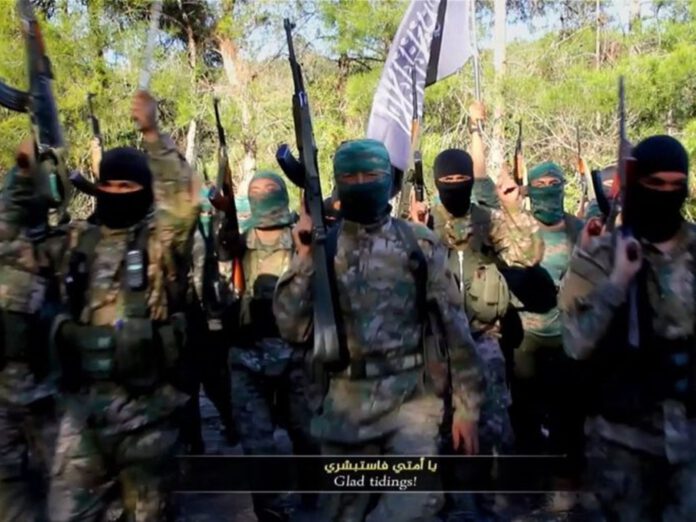
On 11 May 2020, the Federal Register, the daily journal of the United States Government, published notice by the State Department, announcing that the then Secretary of State Pompeo revoked the previous decision to identify the East Turkestan Islamic Movement (ETIM) as a terrorist organization in late October.
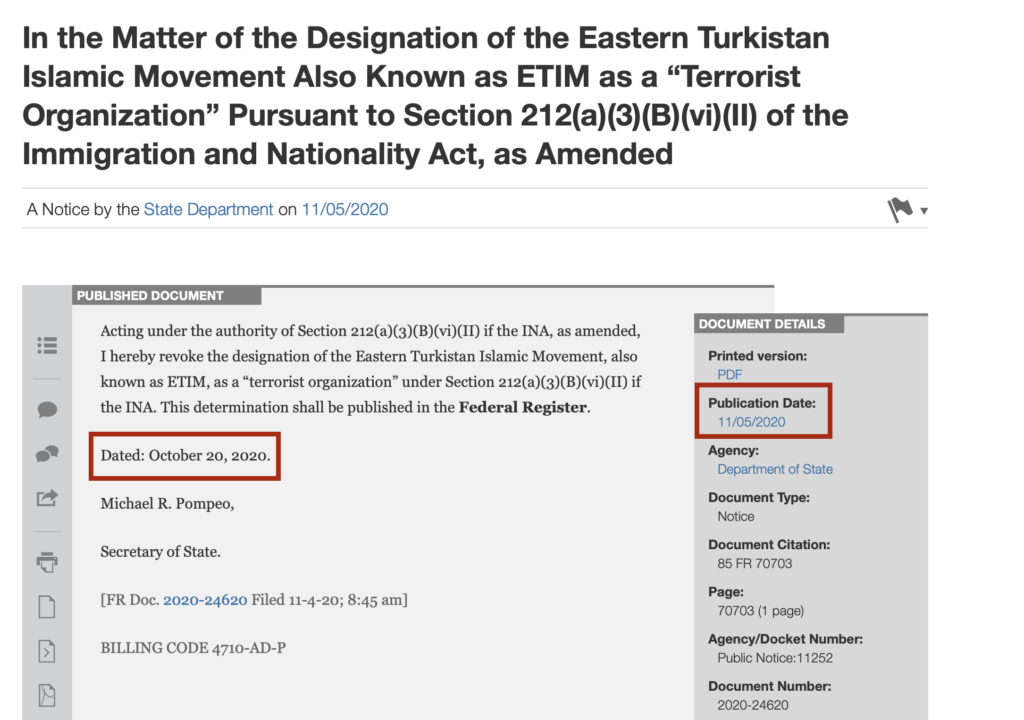
Regarding the determination of the organizational nature of the ETIM, the United States has been active after the September 11 incident in 2001 when its country was severely hit by terrorism and reached a consensus with China. In September of the following year, the United States included it on the Specially Designated Global Terrorists (SDGTs). Two years later, the US State Department included it on the Terrorist Exclusion List (TEL) to prevent its members from entering the country.
The formation and development of ETIM
The ETIM was first founded by a group of so-called Uyghur religious and intellectuals in the 1940s. In the 1950s, its series of armed operations were thwarted and its leaders were arrested. In 1979, one of the leaders of the ETIM was released from prison and secretly conducted a series of “underground lectures” in the Kargilik County of Xinjiang. Among the students who participated in the “lectures”, Hasan Mahsum, also known as Abu-Muhammad al-Turkestani, later became an important leader of the ETIM.
In 1990, the ETIM launched an armed riot in Baren Township, Akto County, Kizilsu, Xinjiang. After the riots subsided, Hasan Mahsum was arrested and sentenced. After being released from prison in 1997, he left Xinjiang. Two years later, he reorganized the ETIM with other terrorists, changing the ideology of the ETIM from emphasizing the establishment of “base areas” in Xinjiang to unite non-Uyghur forces outside of China – ETIM became a transnational terror organization.
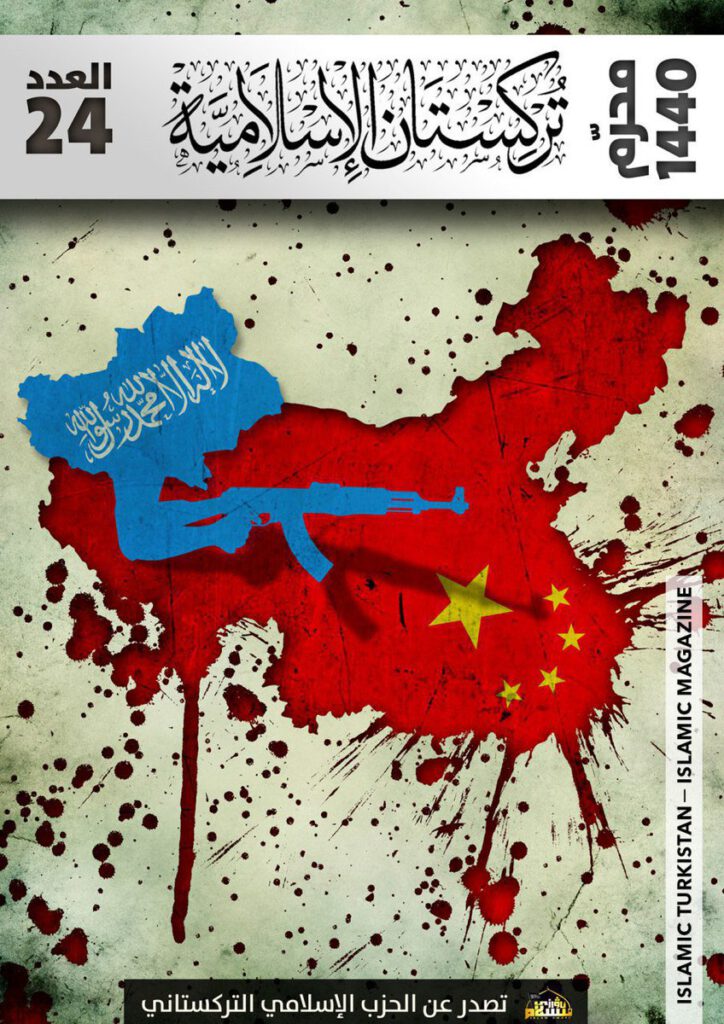
In 2003, Hasan Mahsum was killed in one of the bases of al-Qaeda organization during a joint clean-up operation organized by Pakistan and the United States, and Abdul Haq took over as the leader of the ETIM. In 2010, Abdul Haq was injured by an unmanned combat aerial vehicle by the US military and temporarily withdrew from the leadership position, and Abdul Shakoor al-Turkistani, also known as Emeti Yakuf, took over but he also died in a U.S. drone strike in 2012, and Abdullah Mansour took over. In 2014, the then-U.S. President Barack Obama expressed condolences to the victims of the earlier terrorist attacks in Kunming and Urumqi on the eve of his trip to Beijing to attend the APEC Leaders’ Meeting, and said: “Terrorist groups like ETIM should not be allowed to establish a safe haven in ungoverned areas along China’s periphery.” The ungoverned areas he remarked were seen as a reference to Pakistan’s tribal areas as well as parts of Afghanistan where ETIM stated to have training camps, according to the Economic Times.
The so-called “East Turkestan” is not a geographical name for Xinjiang
Wang Ke, a professor at the Graduate School of International Cultural Studies at Kobe University in Japan, pointed out that there is evidence that until the early 1920s, the Uyghur people did not call Xinjiang “East Turkestan.” In the 1930s, the term “East Turkestan” began to appear in some historical materials. Wang Ke judged that this should be related to the so-called “East Turkestan Republic” established at that time.
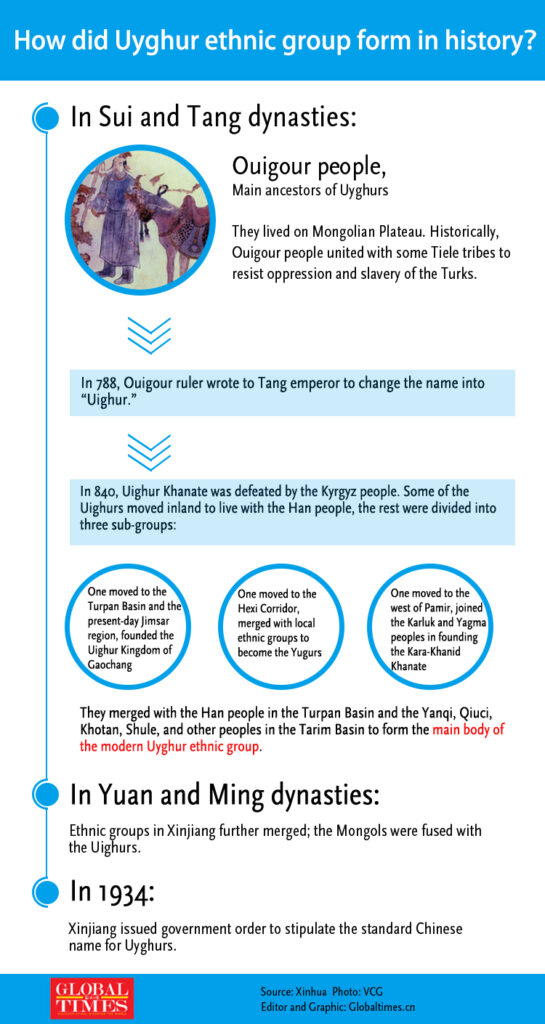
Plus, never in Chinese history has Xinjiang been referred to as “East Turkestan,” and there has never been any state known as “East Turkestan.” From the 18th century to the first half the 19th century, as the West made a distinction between the various Turkic languages, some foreign scholars and writers coined the term “Turkestan” to refer to the region south of the Tianshan Mountains and north of Afghanistan, which roughly covered the area from southern Xinjiang to Central Asia. They called the two areas on either side of the Pamirs “West Turkestan” and “East Turkestan”. At the turn of the 20th century, as “Pan-Turkism” and “Pan-Islamism” made inroads into Xinjiang, separatists in and outside China politicized the geographical concept and manipulated its meaning, inciting all ethnic groups speaking Turkic languages and believing in Islam to join in creating the theocratic state of “East Turkestan,” according to the white paper “Historical Matters Concerning Xinjiang” published by China’s State Council Information Office in July 2019.
Xinjiang Uyghurs have their regional traditions, which are different from the so-called Islamic fundamentalism. The ETIM activities resorted to radical nationalism and separatism from the beginning. The politicization requirements advocated by Islamic fundamentalism are not available in the sinicized Islamic faith.
The international society has reached a consensus on the essence of ETIM
At present, the ETIM is considering Southeast Asia as the first choice for attacking China’s overseas interests, and Southeast Asia is turning from the so-called “East Turkestan” transit route into a battlefield of violence and terrorism. Shu Honghui, dean of the Anti-terrorism Law School, Northwest University of Political Science and Law in China, said that the organized smuggling activities in China’s southwest border region and Southeast Asian countries are mainly munipulated and commanded by the overseas ETIM, trying to spread religious extremism, inciting people to go abroad to participate in Jihad to supplement their strength. In 2015, ETIM participants made violent and terrorist incidents involving the shooting and killing of Vietnamese military police in Vietnam, and the explosion of the Erawan Shrine in Bangkok.
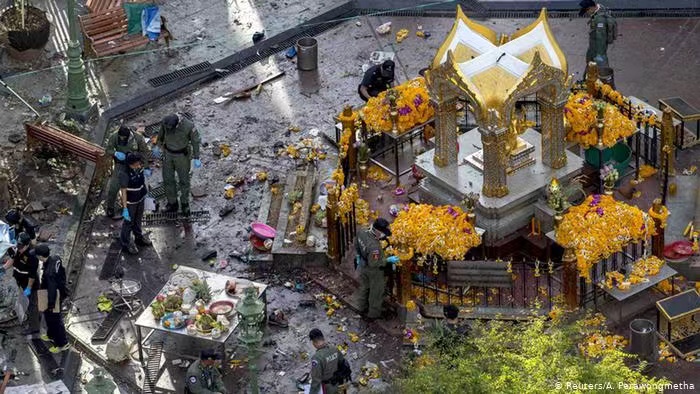
As the main force of Jihad in the world, the terrorism and atrocities committed by the ETIM for years have long aroused great concern in the international community. The sanctions lists for terrorist organizations established by the European Union, Kyrgyzstan, Kazakhstan, Malaysia, Pakistan, Russia, Turkey, the United Arab Emirates, and the United Kingdom have successively identified the ETIM as a terrorist organization.
In fact, the United States has withdrawn ETIM from the list of terrorist organizations more than once. Such a changeable attitude of the United States has fully exposed the hypocritical nature of its double standards in counter-terrorism issues – turning the identification of terrorist organizations and counter-terrorism cooperation into a tool to contain other countries rather than to maintain the international security.
(Source: Federal Register, DW, Turkestan Islamic Party, Global Times)



